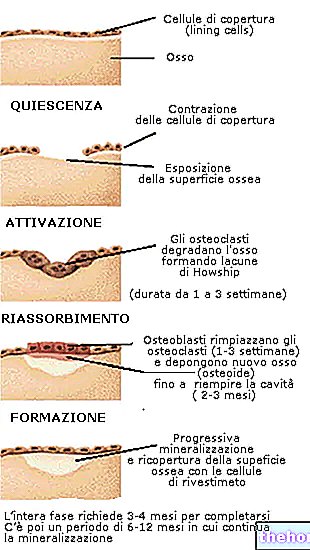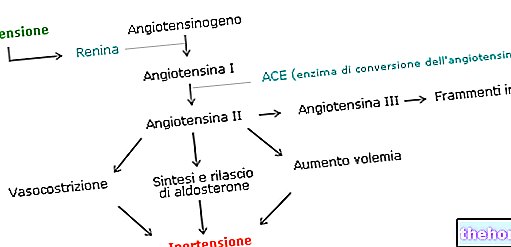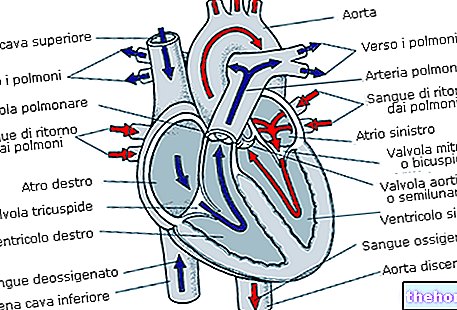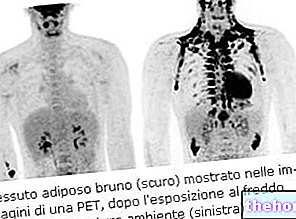IGF-1: What is it
Insulin-like growth factor (IGF-1 insulin-like growth factor), also known as somatomedin, is a protein-based hormone with a molecular structure similar to that of insulin. IGF-1 plays a role very important in the growth processes of the child and maintains its anabolic effects even in adulthood.

Once produced, IGF-1 is released into the circulation, where it binds to special proteins called IGF-BP (IGF-binding proteins or IGF1 transport proteins). These six proteins increase the plasma half-life (from 10 minutes to 3-4 hours) thus prolonging the residence time of the hormone in circulation.
Functions
IGF-1 has insulin-like activity and promotes cell proliferation and differentiation, especially at the cartilage and muscle level (it promotes the activation of satellite cells). The biological functions of somotomedine take place both with autocrine and parocrine / endocrine mechanisms depending on whether the target tissues are the same ones that produce it (autocrine) or others (parocrine if it reaches these tissues with the extracellular fluid, endocrine if the transport fluid is the blood).
Local production of IGF-1 is very important because many effects of this hormone fall directly on neighboring cells (paracrine mechanism). At the muscle level there is, for example, an isoform of IGF-1 called MGF (mechanical growth factor).
Like all protein hormones, IGF-1 also needs specific cellular receptors to carry out its action. These receptors are concentrated above all in certain tissues such as muscle, bone, cartilage, skin, nervous and kidney. Their activity it is very similar to that of the insulin receptors and not surprisingly, a small amount of somatomedin is taken up by the insulin receptors. Alongside IGF-1, two other proteins have been discovered, called IGF-2 and IGF-3 with similar activity to IGF-1.
Interactions with growth hormone
Many actions of GH are mediated by IGF-1 and vice versa. Unlike somatotropin (GH) the plasma levels of somatomedin are relatively constant throughout the day and do not undergo the fluctuations typical of other anabolic hormones, secreted at a circadian rhythm (GH, testosterone).
Concentrations of IGF-1 gradually increase in childhood and puberty, and then decrease in adulthood.
In obese subjects, although GH levels are reduced, IGF1 levels are within the normal range. IGF-1 deficiency and deficiency or reduced functionality of its receptors are found in growth retardation (dwarfism), in cases of liver failure, in hypothyroidism and in diabetics.
Physiologically, the lowest values are found in childhood and old age. However, this aging-related decline can be prevented by an adequate level of physical activity.
IGF-1 is therefore a powerful cell growth factor, a hormone with strong anabolic properties whose mechanisms of action have not yet been fully clarified. At the bone level, for example, it stimulates the activity of chondrocytes, the cells responsible for synthesis of new cartilage and favors the activity of osteoblasts, increasing bone trophism.
Many of these effects depend on the interaction with GH. This association increases nitrogen retention (positive nitrogen balance), stimulates the activity of satellite cells, promotes the disposal of excess adipose tissue and improves the synthesis of DNA, RNA , collagen and hyaluronic acid, thanks to the stimulus on the action of fibroblasts.
Research is currently focusing on the use of this hormone in the treatment of diseases such as diabetes, osteoporosis, muscular dystrophy and dwarfism. These diseases are in fact related to reduced plasma levels of IGF-1.
Increase the GF-1 naturally
Like all the other anabolic hormones, whose effects have been widely demonstrated (DHEA, testosterone and GH), IGF-1 has also attracted the attention of many sportsmen. However, the small number of studies on the efficacy and possible side effects of exogenous administration and the relative dependence on a much more studied and popular hormone such as GH, have partly dampened the enthusiasm for this peptide.
An impressive series of beneficial, sometimes almost miraculous, activities are attributed to this class of hormones, which find fertile ground in the common desire to achieve or maintain beauty, physical prowess, strength and youth.
Pending studies that revive the properties of this hormone and the birth of the usual supplements with a supposed stimulating action, let's see some general advice to increase the synthesis of IGF-1 in a natural way.

Being an anabolic hormone, its maximum stimulation occurs during high intensity exercises with strong production of lactic acid. Bodybuilding therefore seems to be the most suitable activity for increasing the secretion and beneficial effects of IGF-1. Specifically, the maximum stimulus is obtained with high-intensity workouts that do not exceed 45 minutes. However, this type of training can only be practiced by healthy and experienced athletes, while it is not recommended for diabetics, hypertensive people, heart patients and for those suffering from serious joint problems. In these cases, aerobic activities such as running or cycling are more suitable, which, although less effective, undoubtedly contribute to slowing down the aging process.
A diet rich in proteins helps to enhance the effects of IGF-1 and to some extent stimulate its secretion, as long as you do not overdo the doses. In fact, remember that even proteins, if taken in excess, unnecessarily tire the whole organism. The waste produced, by increasing the accumulation of toxins, favors the deposition of fat and the decrease of muscle mass, decreasing the efficiency of the organism. The diet must therefore also be rich in water, fiber and vitamins. The advice continues at this point with routine recommendations such as abstinence from alcohol, drugs and smoking, observance of the right period of night rest and reduction of stress.




























